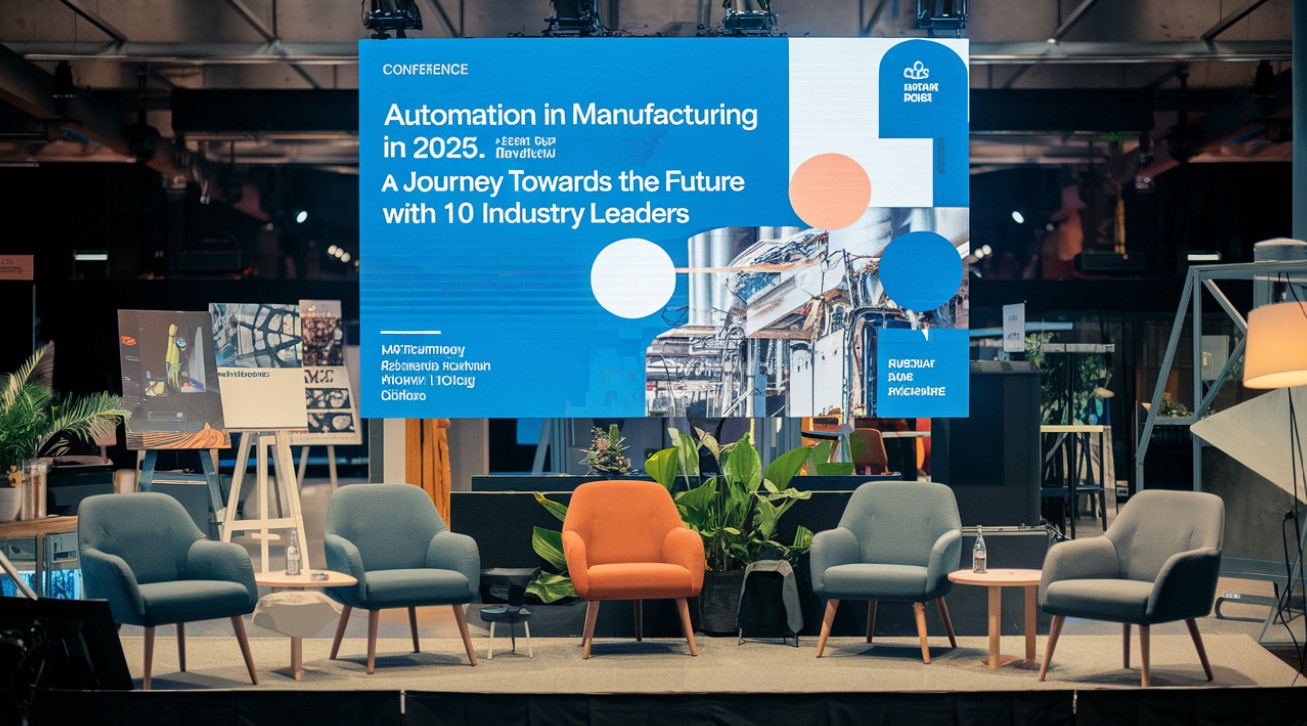
The sound of machines, robotic arms in action, and data flowing without impediment— this is the envisioned futuristic view of manufacturing in 2025, an automated scenario. But how plausible is this vision? Hence, 10 industry leaders were used to put forth a narrative of what the automation of manufacturing might look like in the future.
The Rationale: Why Automate
Let us now come to the point: why automation? The experts went on to highlight some of the motivating reasons underlying this automation:
Increased Efficiency: “Automation enables us to do more with less,” explains Sarah Chen, a CEO from the robotics industry. “It reduces waste, decreases downtime, and optimizes production flow.”
Better Quality: “Machines are precise.” David Lee, a manufacturing consultant, states that “human error is rarely involved, leading to high-quality products.”
Increased Safety: “Automation takes humans out of hazardous environments at worksites,” explains Safety Engineer-in-Charge Maria Garcia. “This considerably lowers the incidents of workplace accidents.”
Increased Demand: “Customers want their products faster and with customization,” states John Williams, a supply chain engineer. “We need to automate the processes to meet these demands.”
Reduced Labor Shortages: “Finding skilled labor is becoming very difficult,” states Emily Carter, a manager of the production. “Automation fills those gaps.”
Also Read: How Automation Helps Manufacturing Companies to Grow Revenue
Technologies Driving Change
The discussion among experts pointed to the following technologies as the engines for manufacturing automation by or before 2025:
Advanced Robotics: “Robots are becoming intelligent and adaptive,” says Robert Khan, a robotics developer. “They can do complex tasks, cooperate with humans, and learn from an environment.” Cobots to work hand in hand with humans will be the way forward.
Artificial Intelligence and Machine Learning: “AI and ML will put the brains into the automation,” describes one A.I. specialist, Lisa Patel. “By analysing data towards decision-making and real-time optimization of the process.
Digital twins are virtual replicas of physical assets,” states Susan Rodriguez. The software engineer states.
“This will allow simulating and optimizing processes before their real-world implementation, saving both time and money.
Additive Manufacturing (3D Printing): 3D printing changes everything about manufacturing,” Thomas White, an additive manufacturing expert, states. “For, it allows us to create very complex technologies.
Humans Working with Machines: Collaborative Efforts, Not Replacements
One of the biggest worries regarding increased automation is job displacement. Our experts maintain that the future of manufacturing will be defined by collaboration, rather than replacement.
“New jobs will be created by automation,” says Sarah Chen. “There will be a need for people to design, program, and maintain these automated systems.”
“The work will shift from manual operating to skilled work,” adds David Lee. “It will require re-skilling the workers into data analysis, robotics programming, and artificial intelligence management.”
“Creating and defining problems will always be important to human creativity and problem-solving,” notes Maria Garcia. “Automation will allow the individuals to focus on bigger-picture problems.”
Challenges and Opportunities:
Bright as the future of manufacturing automation may be, the experts acknowledged that things were not that bright:
Initial investment: “While automation is an expensive investment,” states John Williams, “it is crucial for companies to evaluate the return expected on the investment so they can go ahead with a proper implementation plan.”
Cybersecurity: “With manufacturing getting connected, cybersecurity continues to be a big concern,” warns Emily Carter. “We need to protect our systems from cyberattacks.”
Skills Gap: “We need to invest in training and education to bridge the skills gap,” observes Robert Khan. “This requires collaboration between industry, academia, and government.”
Integration: “It may take a lot for the integration of different automation technologies,” says Lisa Patel. “What we need to do is come up with open standards as well as interoperable systems.”
Yet all of this is not to say that our experts were not upbeat on what opportunities might come as follows:
Increased Competitiveness: “Automation will help companies stay competitive in the global market,” says Michael Brown.
Sustainable Manufacturing: “In terms of waste reduction and energy conservation, automation will help a lot, and therefore, reducing our environmental impact,” says Susan Rodriguez.
Personalized Products: “With automation, there is mass customization, meaning people will be able to get exactly what they want,” says Thomas White.
Resilient Supply Chains: Supply chains can be made much more responsive to disruption with AI and IoT systems.
Closing Thoughts
The information from the above leaders helps predict the future of factory automation in the year 2025, as recommended by these industry leaders. These visions of the future include men and machines coming together as one entity; the equilibrium between sustainability and efficiency, and the new paradigm that is transforming the old. In that way, manufacturers would be able to realize the full potential of automation and visualize a future in which their operations and communities would benefit. It is a matter of embracing change and making the right investment in technology and people.






